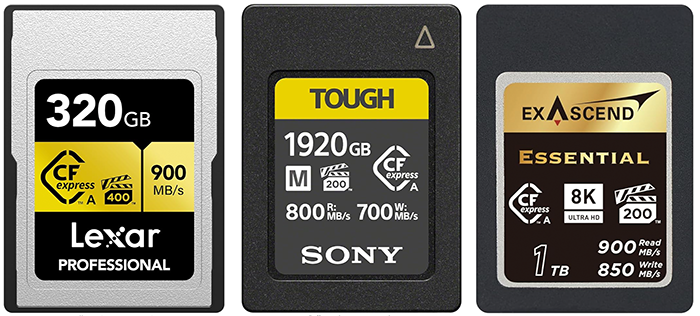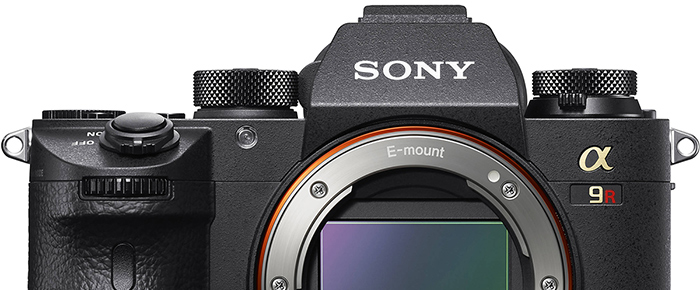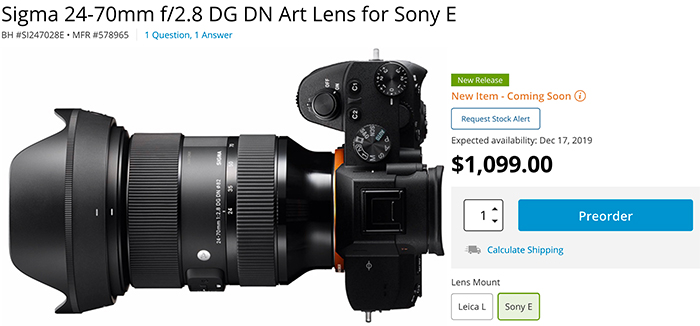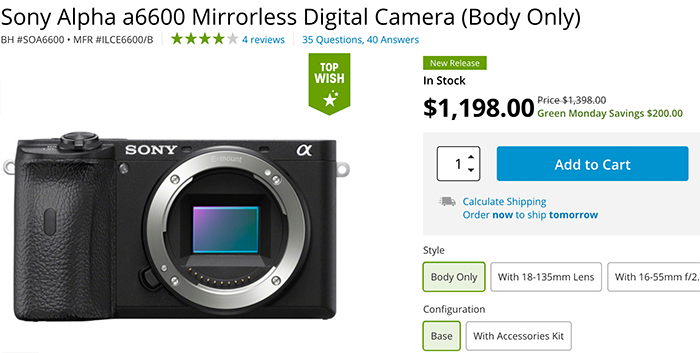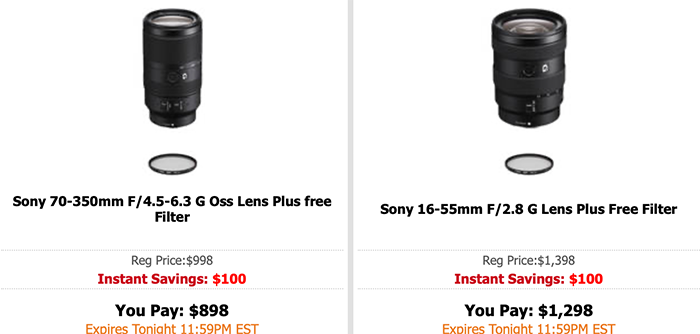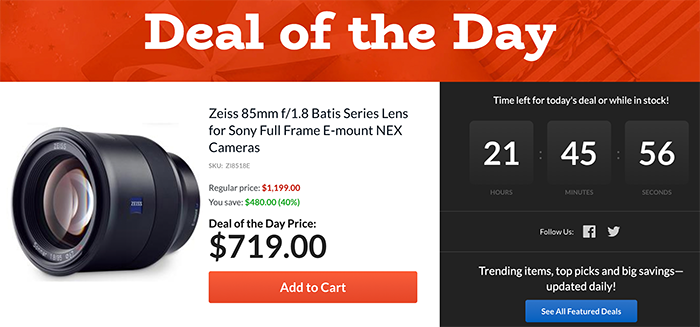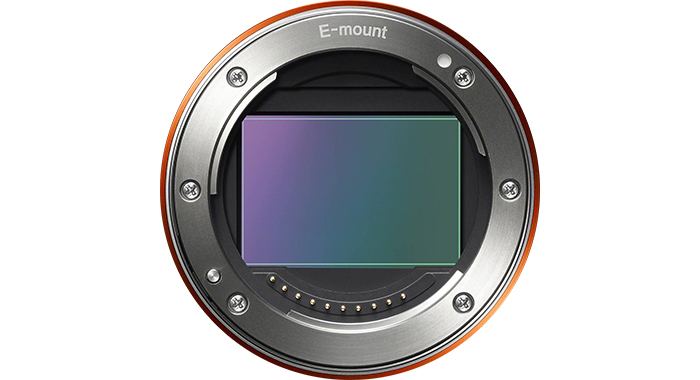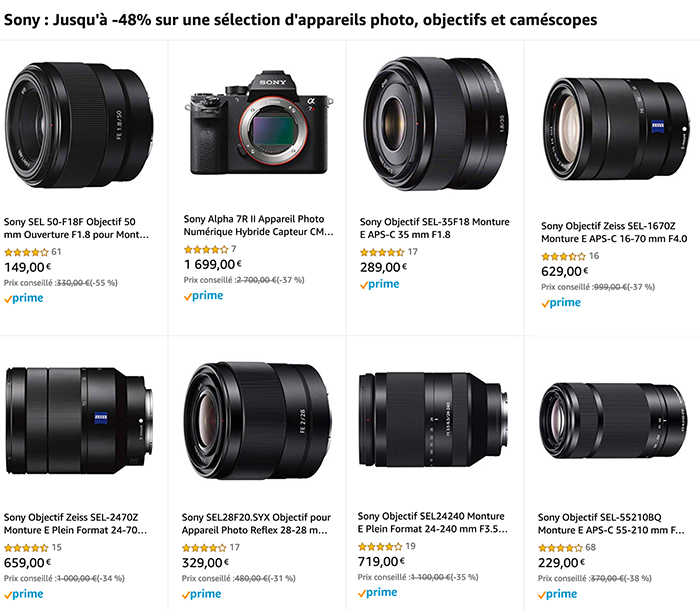First full Sigma 24-70mm f/2.8 FE english review by Marc Alhadeff: “excellent standard zoom for the A7RIV”
Sigma 24-70mm FE lens at BHphoto, Adorama, Calumet DE, FocusCamera. WexUK
Marc Alhadeff from SonyAlpha.blog reviewed the brand new Sigma 24-70mm f/2.8 FE lens and concludes:
–
The Sigma 24-70mm F2.8 DG DN Art (1200 euros) is an excellent standard zoom for the A7RIV.
Globally it is the best in its category for the A7RIV and the only one to resolve fully the 61Mpix sensor (only in the centre), its main weakness is the 24mm focal length where the Sony 24-70 F2.8 GM does consistently better
Pros
Excellent to outstanding centre sharpness on A7RIV between 35 and 70mm
Moderate price
Excellent smooth blurry background
Very Good Bokeh Balls with no artifacts and well rounded
Very Good build quality and ergonomics
Very good color rendition
Weather sealed
Short focusing distance
Fast and reliable and silent AF
Very Low CA except at 70mm (moderate)
Average
Visible distorsion and moderate vignetting but that should be corrected in a future Lightroom Lens profile (not worse than the Tamron or the Sony)
Resistance to flare is not a the level of what we have on Prime but Sony and Tamron have also same issue
Weight 830g (but lighter than the Sony 886g)
24mm sharpness less good than Sony but roughly similar to Tamron at 28mm
Corners sharpness only reaching very good levels max and good at 50mm
Cons
None at this price point
For A7III I would still recommend the Tamron 28-75mm F2.8 Di III RXD (900 euros) as the extra gain in performance of the Sony and Sigma won’t be noticeable most of the time
For the A7RIII and mostly for A7RIV:
if your main usage is around 24mm or are looking for very good consistency centre to corners around 50mm go with the Sony FE 24-70mm F2.8 GM
otherwise the Sigma offers superior performance mostly in centre (e.g. for portrait at 50 & 70mm) and for 40% less cost
–
Sigma 24-70mm FE lens at BHphoto, Adorama, Calumet DE, FocusCamera. WexUK
New Green Monday Savings: $200 off on the Sony A6600 and $100 off on the 16-55mm G ad 70-350mm G lenses!
There is a new Green Monday rebate: $200 off on the Sony A6600 sold at BHphoto, Adorama, FocusCamera and Amazon.
And today only you save $100 on the two new G lenses:
$100 off on the E 16-55mm F2.8 G at Amazon, BHphoto, Adorama, FocusCamera.
$100 off on the E 70-350mm F4.5-6.3 G OSS at Amazon, BHphoto, Adorama , FocusCamera.
And today only you save $450 on the Zeiss Batis 85mm f/1.8 FE lens sold by Adorama:
And don’t forget you get an Atomos Ninja and others extras for free with the Sony A7rIV sold by Adorama:
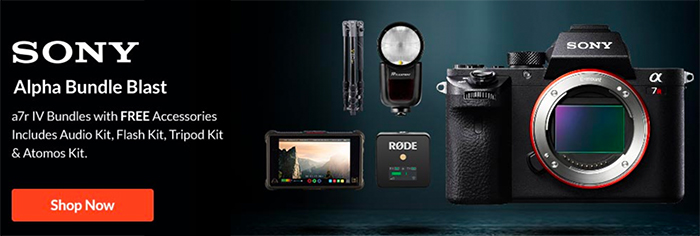
Sony announces a “new pixel structure for mobile image sensors”
This isn’t strictly related to Alpha gear but it’s nice t see Sony pushing boundaries on their mobile sensor tech:
2×2 On-Chip Lens Solution
A new pixel structure for mobile image sensors
The 2×2 On-Chip Lens (OCL) solution is a new image sensor technology for achieving high-speed focus, high-resolution, high-sensitivity, and high dynamic range.
In conventional technologies, the variance in sensitivity per pixel caused by the structure (described below), which places an on-chip lens that spans four pixels, was a major issue. However, we have successfully developed a high-performance image sensor with high image quality through optimization of the device structure and the development of a new signal processing technology.
Pixel structure
A condenser lens called an “on-chip lens” is placed on top of the image sensor pixels.
Conventional on-chip lenses were placed on each pixel. However, four adjacent pixels with the same color share one on-chip lens in 2×2 OCL.
The following benefits are realized as a result:
Phase differences can be detected across all pixels
Since conventional methods for detecting phase differences used dedicated pixels with no imaging functionality, only a small number of pixels could be used as detection pixels.
Due to the fact that the imaging pixels can be used as detection pixels in the 2×2 OCL method, phase differences can be detected across all pixels. As a result, the sensor can focus on even small objects with high accuracy.
Improved phase difference detection performance (focus performance)
Focus performance at low light intensity
To achieve stable focus performance at low light intensity, the information obtained from multiple phase difference detection pixels must be integrated and the impact of the noise eliminated.
As mentioned above, 2×2 OCL is able to detect phase differences across all pixels, which makes it possible to integrate more information and achieve a stable focus performance.
-
Conventional technology
-
2×2 OCL
Focus performance that does not depend on the object shape or pattern
Since conventional phase difference detection methods separated the pixels laterally for detection, they were not very good at detecting objects which lacked pattern change in the horizontal direction (ex: objects composed of edges in the horizontal direction).
However, 2×2 OCL is able to detect vertically in addition to horizontally, which enables high-speed auto focus using phase differences in every situation.
The figures below show the phase difference detection characteristics of objects with edges at various angles:
Color filter array with a Quad Bayer structure
Adopting a color filter array with a Quad Bayer structure that places four pixels with the same color next to each other addresses the needs of both high sensitivity and high resolution. In addition, it also supports High Dynamic Range (HDR) imaging.
High resolution
Array conversion through a unique signal processing function enables high resolution imaging.
High sensitivity
Bright images and videos with low noise can be captured by adding together the four adjacent pixels with the same color. Moreover, improved sensitivity is realized through the design and production technology of the 2×2 OCL which increases the efficiency of light utilization.
High Dynamic Range (HDR)
Real-time HDR output is possible through a unique exposure control technology and signal processing function.
